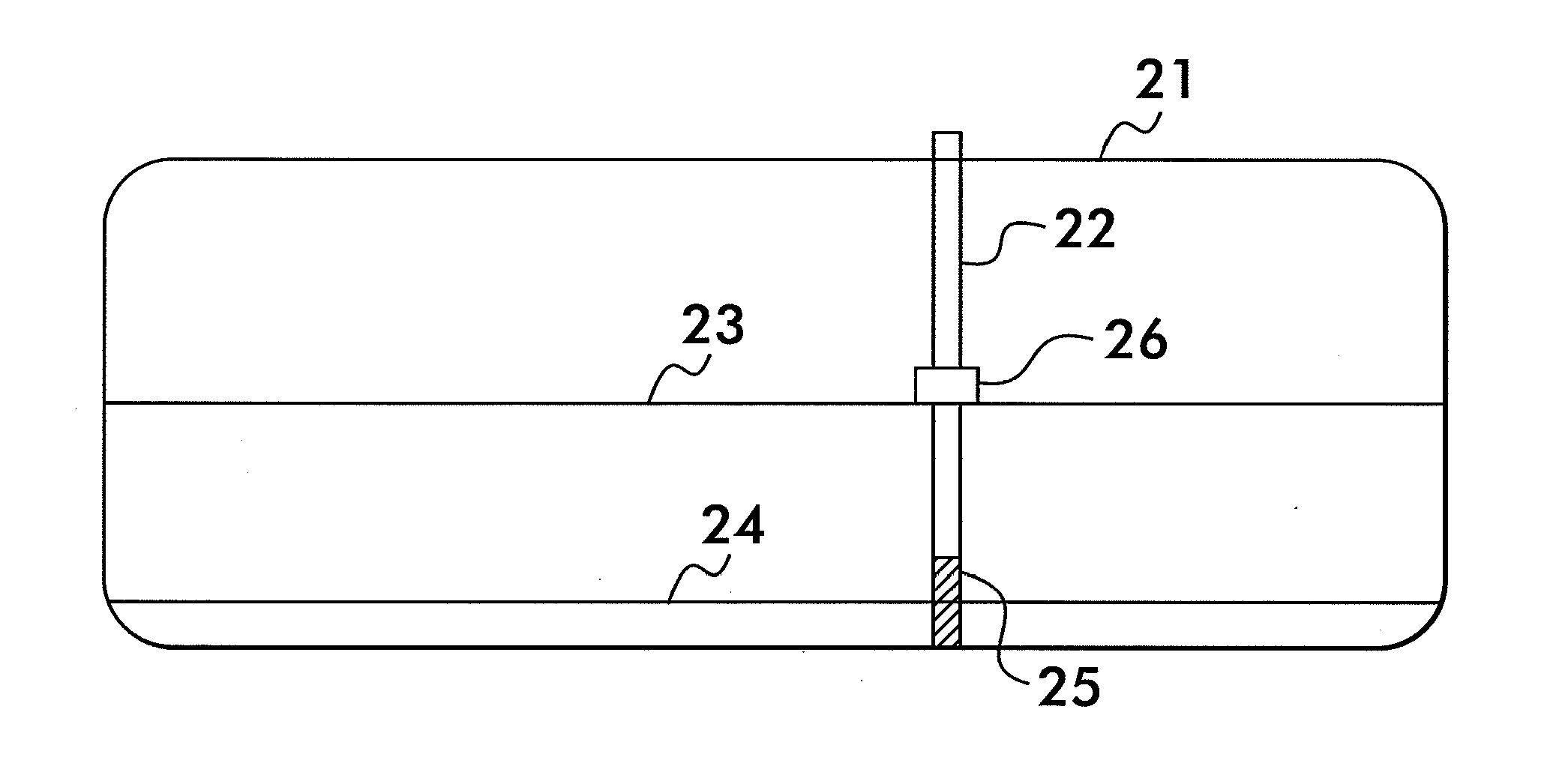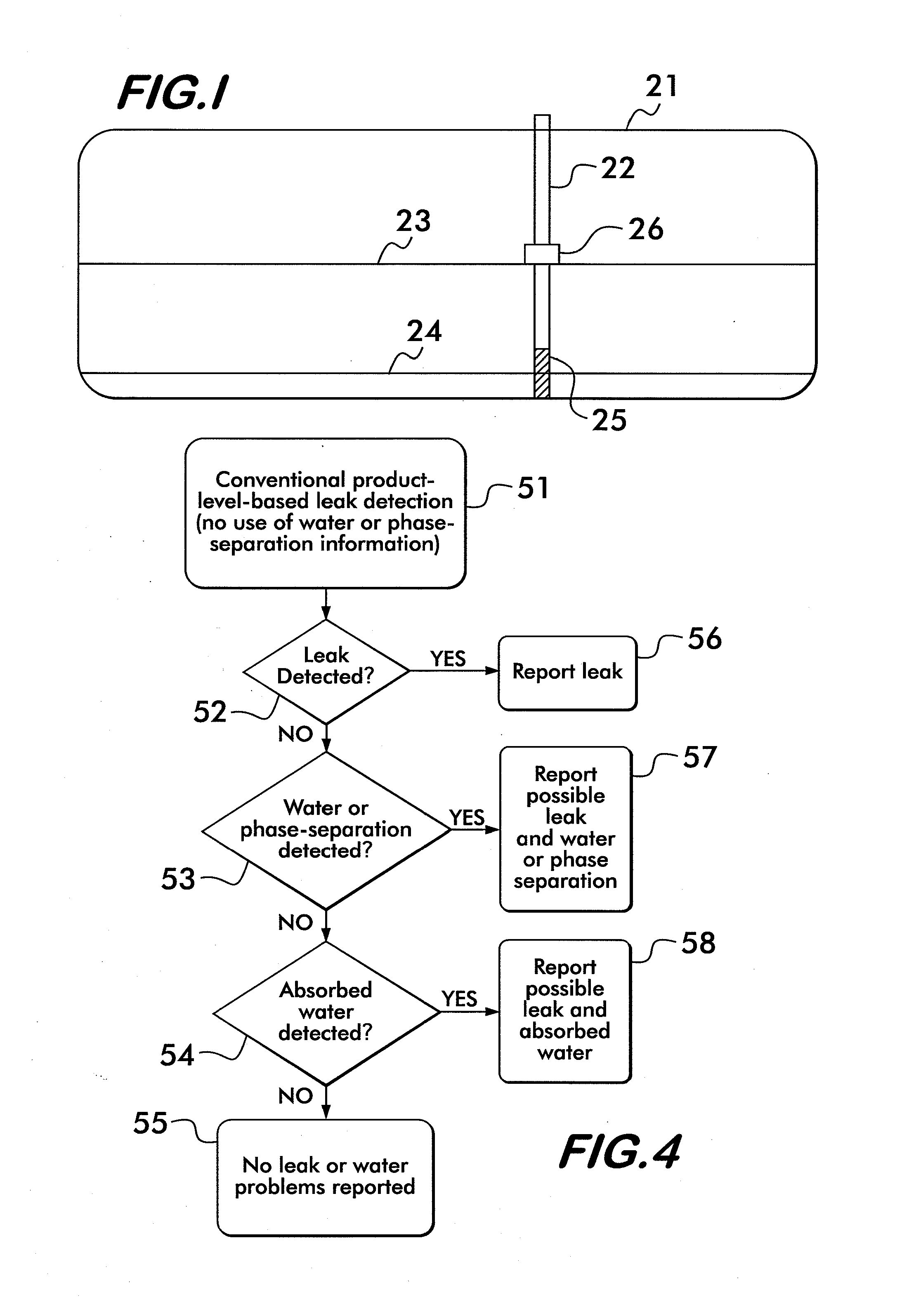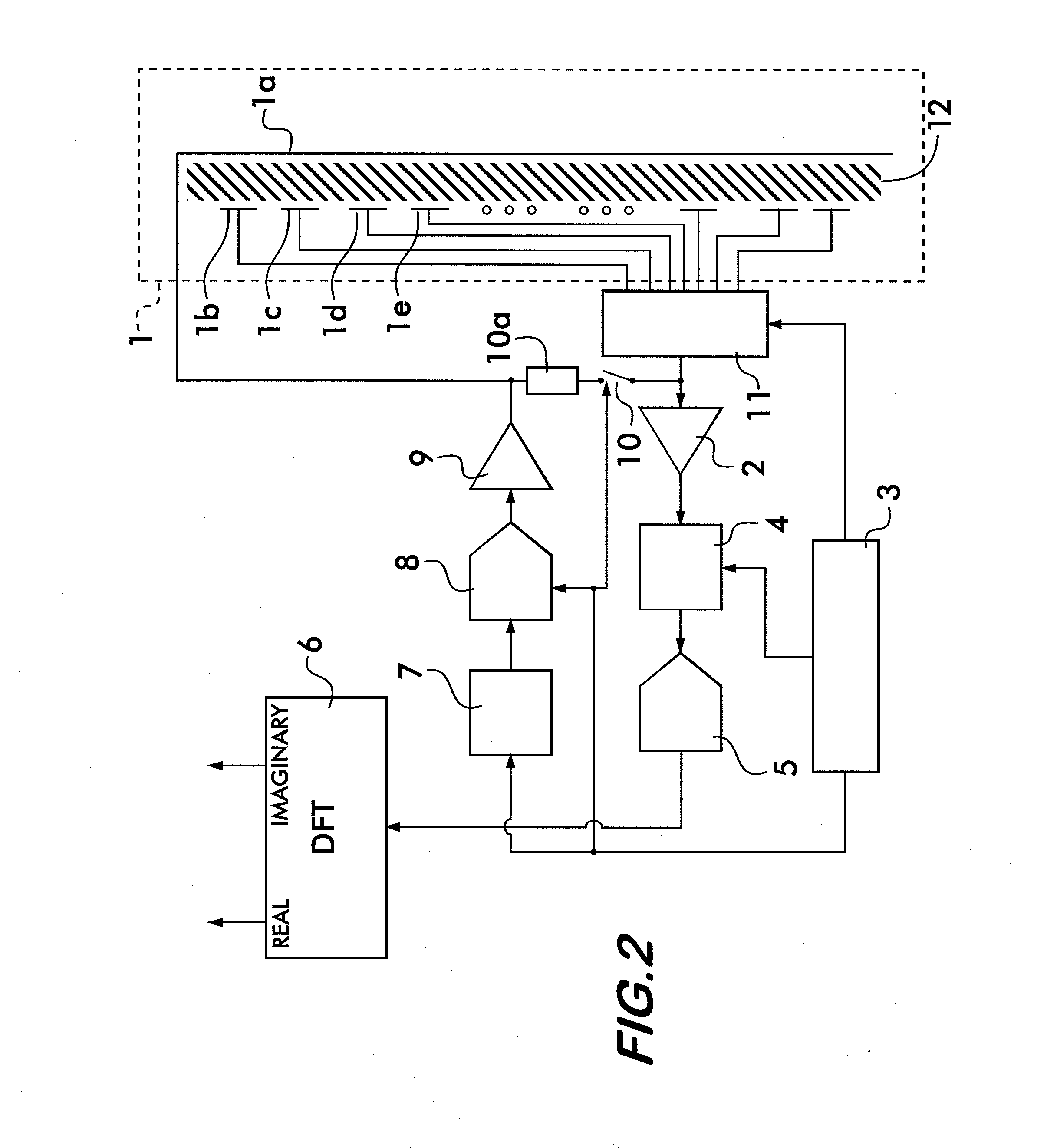Automated phase separation and fuel quality sensor
a phase separation and fuel quality technology, applied in the direction of liquid/fluent solid measurement, fluid tightness measurement, instruments, etc., can solve the problems of gasoline/ethanol/water system reaches, no longer remain a stable mixture, and traditional magnetostrictive buoyancy float sensors do not operate properly, so as to minimize the attraction of contaminants, reduce the probability of errors, and reduce the effect of surface energy
- Summary
- Abstract
- Description
- Claims
- Application Information
AI Technical Summary
Benefits of technology
Problems solved by technology
Method used
Image
Examples
Embodiment Construction
[0062]In FIG. 1, a magnetostrictive-probe-based Automated Tank Gauge or ATG (22) is deployed in storage tank (21) which contains a liquid product up to a certain level (23). The product float (26) floats on the product surface and provides an indication of product level to the ATG. An embodiment of the present invention is represented as a sensor (25) deployed at the bottom of the ATG probe. Wiring passing through the ATG powers this type of embodiment and allows for data from the sensor to be passed to the ATG control panel.
[0063]If the liquid stored in the tank is a ethanol-blended fuel, and if water is present such that phase separation has occurred, a level of aqueous ethanol (24) will form at the bottom of the tank. If such an aqueous ethanol layer covers the active region of sensor (25) then the sensor will detect the aqueous ethanol and report the problem to the control panel.
[0064]Even in cases where phase separation is not present, the sensor (25) can monitor the contents o...
PUM
 Login to View More
Login to View More Abstract
Description
Claims
Application Information
 Login to View More
Login to View More - R&D
- Intellectual Property
- Life Sciences
- Materials
- Tech Scout
- Unparalleled Data Quality
- Higher Quality Content
- 60% Fewer Hallucinations
Browse by: Latest US Patents, China's latest patents, Technical Efficacy Thesaurus, Application Domain, Technology Topic, Popular Technical Reports.
© 2025 PatSnap. All rights reserved.Legal|Privacy policy|Modern Slavery Act Transparency Statement|Sitemap|About US| Contact US: help@patsnap.com



